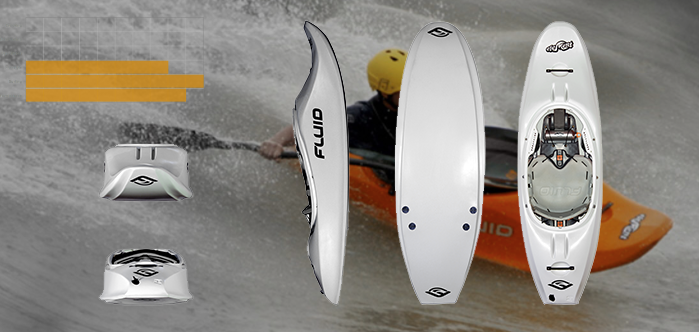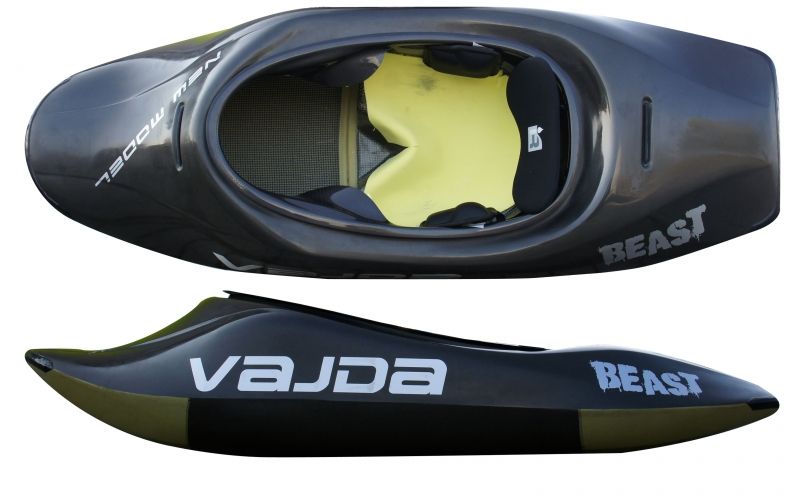Hi all!
I’ve recently discovered the world of composites and have been fascinated with the whole subject and intrigued with what can be produced.
I am a very keen kayaker and have a burning desire to build a composite version of my current plastic surf boat, a Fluid Element which weighs around 15kgs and measures 202cm x 64cm (widest part).

I have tried paddling some other boats which are produced in carbon/kevlar, but due to their design I just haven’t got on with them aswell as my current boat.
My boat was produced in carbon/kevlar in a limited amount (around 30), but these are very rare to come by and as you can imagine, fetch a large amount of money as they retailed at £1395 new. I am therefore planning a long-term project to build myself a composite version but have come across the usual problems that most people encounter such as which combination of materials to use.
I will be on a tight budget with not much room for error, so I need to keep costs down by using cheaper materials/resins if possible. I plan to take a mould of my current boat in either two or three parts, then create the boat using wet-lay and vacuum bagging.
My initial thoughts are one of the following four lay-ups with Polyester/Vinylester resin with a target weight under 9kgs:
(From Outside the boat to Inside the boat)
Outer layer of 300g Black Diolen 2/2 twill
1x 300g plain Diolen 2/2 twill
3mm foam core
1x 300g plain Diolen 2/2 twill
1x 300g Black Diolen 2/2 twill
or (if the Diolen only lay-up is not stiff enough)…
Outer layer of 300g Black Diolen 2/2 twill
1x 300g S-Glass 2/2 twill
3mm foam core
1x 300g S-Glass 2/2 twill
1x 300g Black Diolen 2/2 twill
or (if the lay-up needs to be stronger still)…
Outer layer of 300g Kevlar 2/2 twill
1x 300g Carbon 2/2 Twill
3mm foam core
1x 300g Carbon 2/2 twill
Or (if my budget will stretch to it)…
2 x 228g Carbon/Kevlar Aramid
3mm Foam Core
2x 228g Carbon/Kevlar Aramid
My question is, firstly will the lay-ups be strong enough for white water use in the sea (waves) with the odd scrape and knock from pebbly beaches? It will no doubt take more of a beating than a longer sea kayak as it’s more of a play boat style kayak. And secondly, which lay-up will be stronger? I could possible use a mixture of the lay-ups with a stronger/more expensive one making up the base of the kayak, and a cheaper one making up the top half of the kayak?
I have chosen to put either the Diolen or Kevlar on the outside layer to give better abrasion resistance and to protect the Carbon/S-Glass, however I have found some conflicting information online that suggests the Kevlar/Diolen should be on the inner layer?? Being that Kevlar/Diolen can take more damage before splitting, I would have thought if it were on the inner layer, the carbon would crack on the outside before the Kevlar/Diolen, whereas on the outside it would keep the cracked carbon beneath the layer of Kevlar/Diolen protecting the boat from splitting?
Pages where I have gathered inspiration has come from:
Kevlar Playboat:
http://shanesliquidlogic.blogspot.co.uk/2011/12/composite-playboat-prototype-1.html

Carbon Zet Playboat:
https://www.youtube.com/watch?v=IA9vkauvxGY
Carbon Vadja Playboat:
http://vajdafreestyle.com/en/Kayaks/Beast/Beast-series/

Lots more questions to follow no doubt, but any help/suggestions would be fantastic!
Cheers,
Junior.